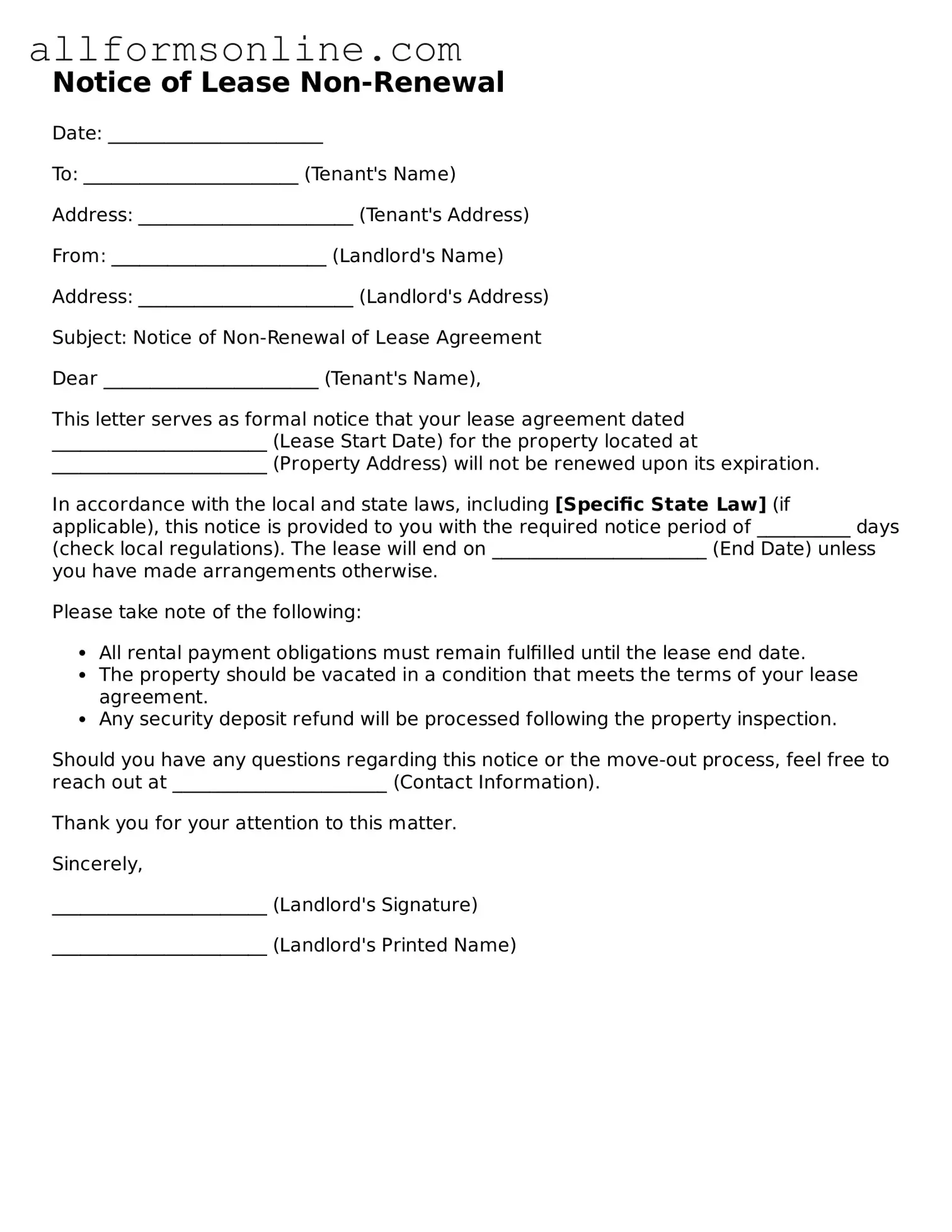What is a Notice of Lease Non-Renewal form?
The Notice of Lease Non-Renewal form is a written notification that a landlord or tenant provides to indicate that they do not wish to extend or renew the current lease agreement. This form serves as an official record of the intent not to continue the lease beyond its expiration date.
Who can use the Notice of Lease Non-Renewal form?
Both landlords and tenants can use this form. Landlords typically send it to inform tenants that their lease will not be renewed. Similarly, tenants may use it to notify landlords of their decision not to renew the lease. It’s important for both parties to follow proper procedures to avoid misunderstandings.
When should the Notice of Lease Non-Renewal be given?
The timing for providing this notice often depends on the terms outlined in the lease agreement. Generally, it is best practice to give notice at least 30 days before the lease expires. However, some leases may require a longer notice period, so it’s essential to check the specific terms of your lease.
What information should be included in the Notice of Lease Non-Renewal?
Key details to include are the names of the landlord and tenant, the property address, the lease expiration date, and a clear statement indicating the intention not to renew the lease. Additionally, including the date the notice is being sent can help clarify timelines.
Is a Notice of Lease Non-Renewal required by law?
While it may not be legally required in every situation, providing a Notice of Lease Non-Renewal is a good practice. It helps to ensure that both parties are on the same page regarding the lease's status and can prevent potential disputes later on.
Can a landlord refuse to accept a Notice of Lease Non-Renewal?
A landlord cannot refuse to accept the notice itself, as it is a formal communication of the tenant's intent. However, landlords can address any concerns about the notice's timing or validity based on the lease agreement. Open communication is key to resolving any issues.
What happens after the Notice of Lease Non-Renewal is given?
Once the notice is given, both parties should prepare for the end of the lease term. Tenants should plan for moving out and returning the property in good condition, while landlords may begin looking for new tenants. It’s a good time for both sides to finalize any outstanding matters, such as security deposits or repairs.
Can a tenant change their mind after sending a Notice of Lease Non-Renewal?
If a tenant decides they want to stay after sending the notice, it’s best to communicate this to the landlord as soon as possible. The landlord may or may not agree to renew the lease, depending on their plans for the property. Open dialogue can help navigate this situation.
What if a tenant does not receive a Notice of Lease Non-Renewal?
If a tenant does not receive a Notice of Lease Non-Renewal and the lease is approaching its end, they should reach out to the landlord to clarify the situation. It’s essential to ensure that both parties are aware of each other's intentions to avoid any surprises when the lease expires.
